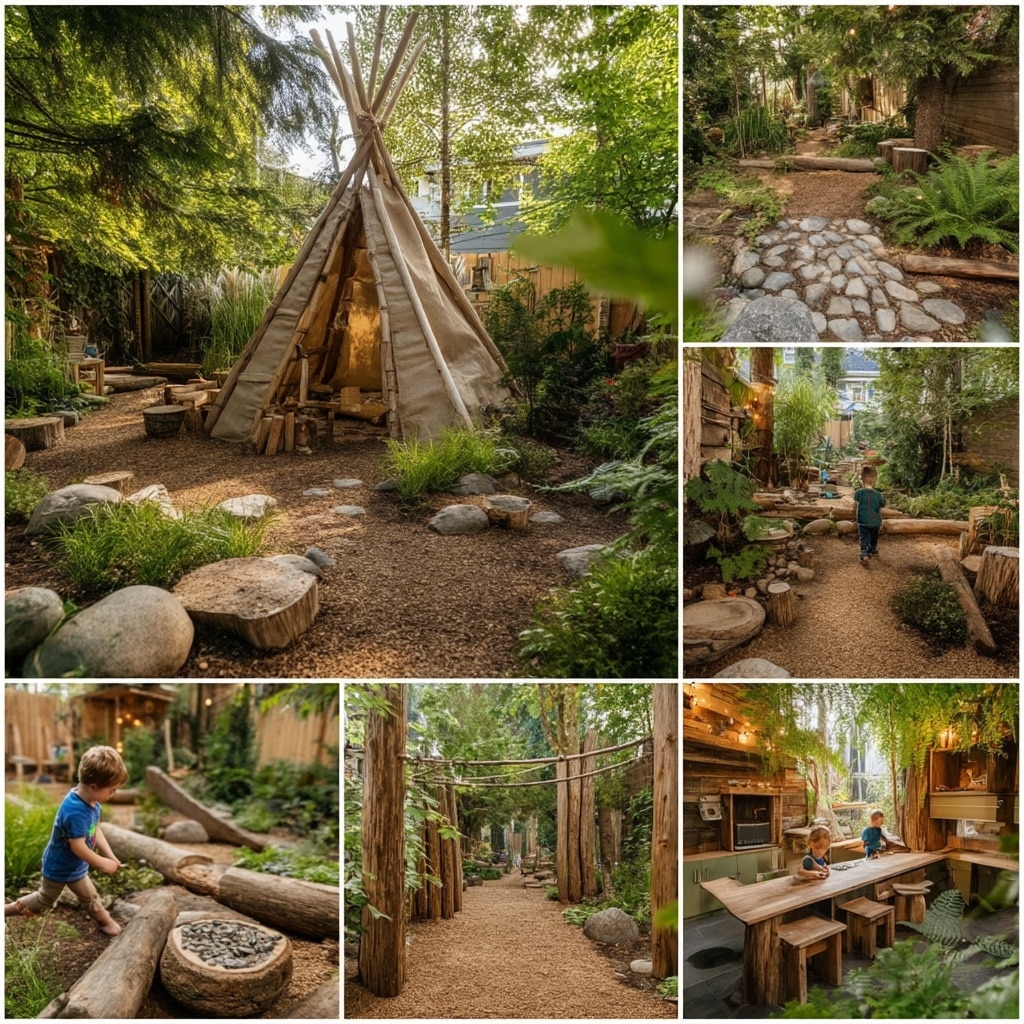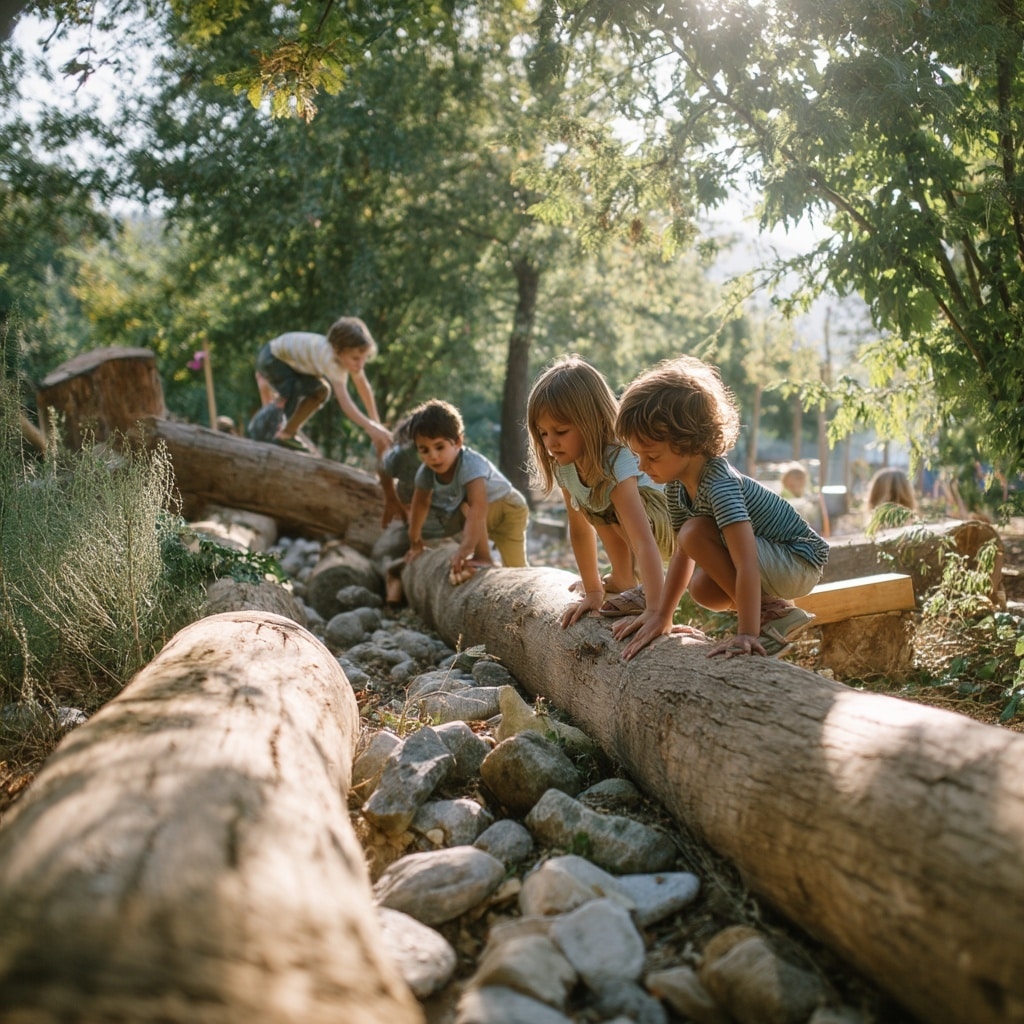Natural outdoor playground designs are changing the way children connect with nature. Instead of relying on bright plastic structures, these play areas focus on natural materials—wood, stone, sand, and water—to encourage creativity, imagination, and sensory exploration. A well-designed natural playground transforms an ordinary backyard or community park into a dynamic space where kids can climb, dig, build, and dream freely.
Unlike traditional playgrounds, natural ones invite children to shape their play environment. A log becomes a bridge, a pile of sand turns into a castle, and a simple patch of grass becomes a race track for tiny feet. Every corner encourages discovery, balance, and teamwork, fostering a deep love for the outdoors from an early age.
Table of Contents
Benefits of a Natural Outdoor Playground
Creating a natural outdoor playground offers more than just fun—it builds a foundation for growth, imagination, and well-being. Children who play in natural settings tend to develop stronger physical, emotional, and social skills. Here’s why these spaces are so valuable:
1. Encourages Imaginative Play
Natural playgrounds invite open-ended creativity. A fallen branch can be a sword, a balance beam, or part of a fort. Unlike fixed play structures, nature-based materials allow endless possibilities, inspiring kids to invent their own games and stories.
2. Boosts Physical Development
Climbing boulders, balancing on logs, and jumping over tree stumps help improve coordination, balance, and strength. The uneven surfaces of a natural playground challenge children to move in diverse ways, enhancing both gross and fine motor skills.
3. Strengthens Emotional Well-Being
Time spent in nature reduces stress and promotes calm. The textures, sounds, and scents of the outdoors provide sensory experiences that soothe and regulate emotions. It’s a healthy break from screens and structured indoor routines.
4. Builds Social Skills
Natural play areas encourage teamwork and communication. Children work together to build dens, create mud pies, or design mini obstacle courses, learning cooperation and problem-solving in a fun, natural setting.
5. Promotes Environmental Awareness
When kids play in a natural outdoor playground, they form a genuine connection to the earth. They begin to appreciate the value of plants, insects, and wildlife—fostering respect for nature and lifelong eco-friendly habits.
Key Elements to Include in a Natural Outdoor Playground
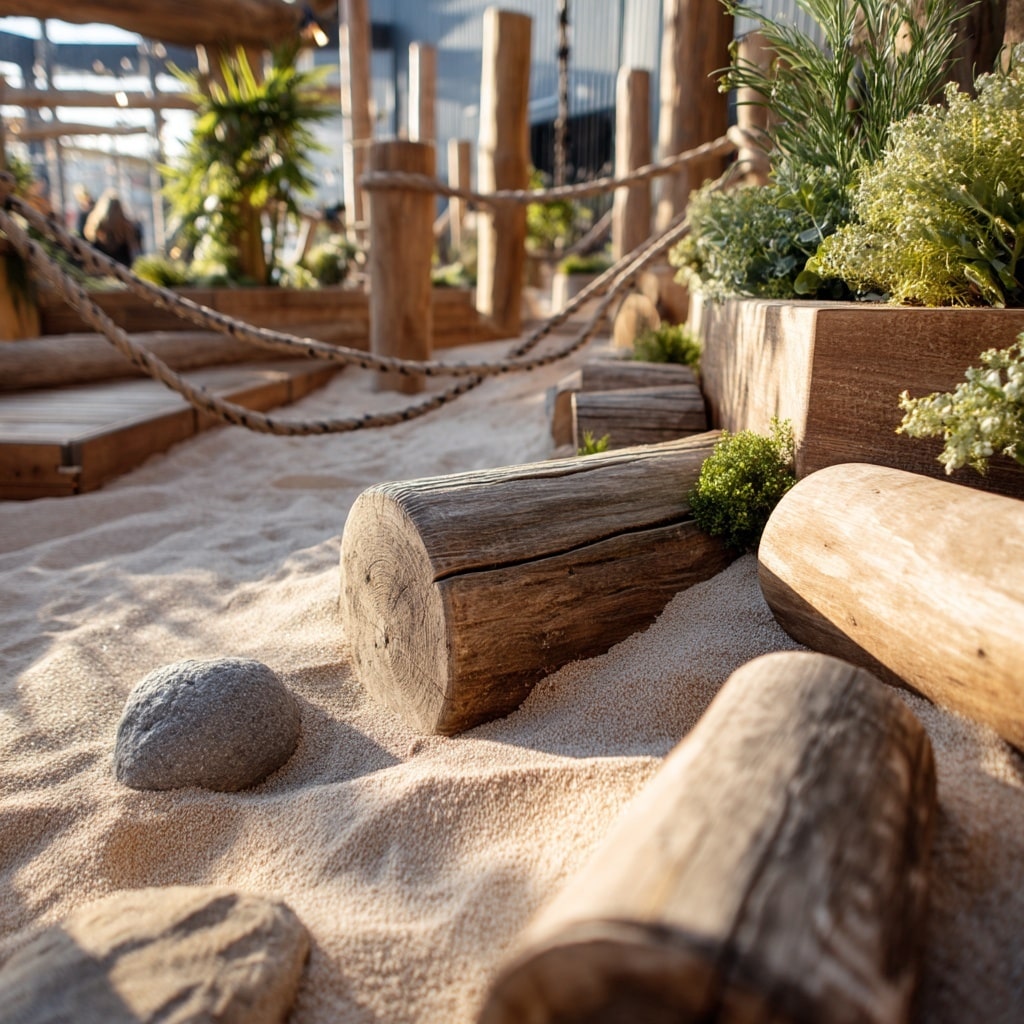
Designing a natural outdoor playground means blending creativity with nature’s raw beauty. The goal is to provide children with an open, sensory-rich environment that sparks curiosity and imagination. Here are some essential features that make these spaces come alive:
1. Logs and Tree Stumps
Logs, branches, and tree stumps are simple yet powerful tools for play. They can be used for balancing, jumping, building forts, or sitting during storytelling time. Arrange them in clusters or stepping-stone paths to promote coordination and creative movement.
2. Sand and Water Play Areas
Nothing beats the joy of mixing sand and water. A small sandpit with a nearby water source allows kids to build castles, dig rivers, and experiment with textures. These elements encourage sensory play and early scientific thinking through cause and effect.
3. Climbing and Balancing Structures
Incorporate natural climbing opportunities like boulders, tree trunks, or rope webs. They challenge children to test their limits and improve physical strength safely. Balancing logs or low beams add fun while developing coordination and focus.
4. Living Plants and Gardens
A natural outdoor playground feels more alive when surrounded by greenery. Add child-safe plants, shrubs, and flowers to create shade, scents, and textures. Kids can even help with watering and weeding, teaching them basic gardening and responsibility.
5. Creative Building Materials
Provide loose, natural materials—sticks, pinecones, pebbles, leaves, and fabric scraps. These resources encourage open-ended construction play where imagination takes the lead. Children learn to collaborate, design, and problem-solve creatively.
6. Quiet Corners and Hideouts
Include cozy nooks made from branches or bamboo for children who enjoy calmer activities. These spaces give them privacy to read, draw, or simply relax—balancing the excitement of active play with moments of peaceful retreat
Tips for Designing a Safe and Engaging Natural Playground
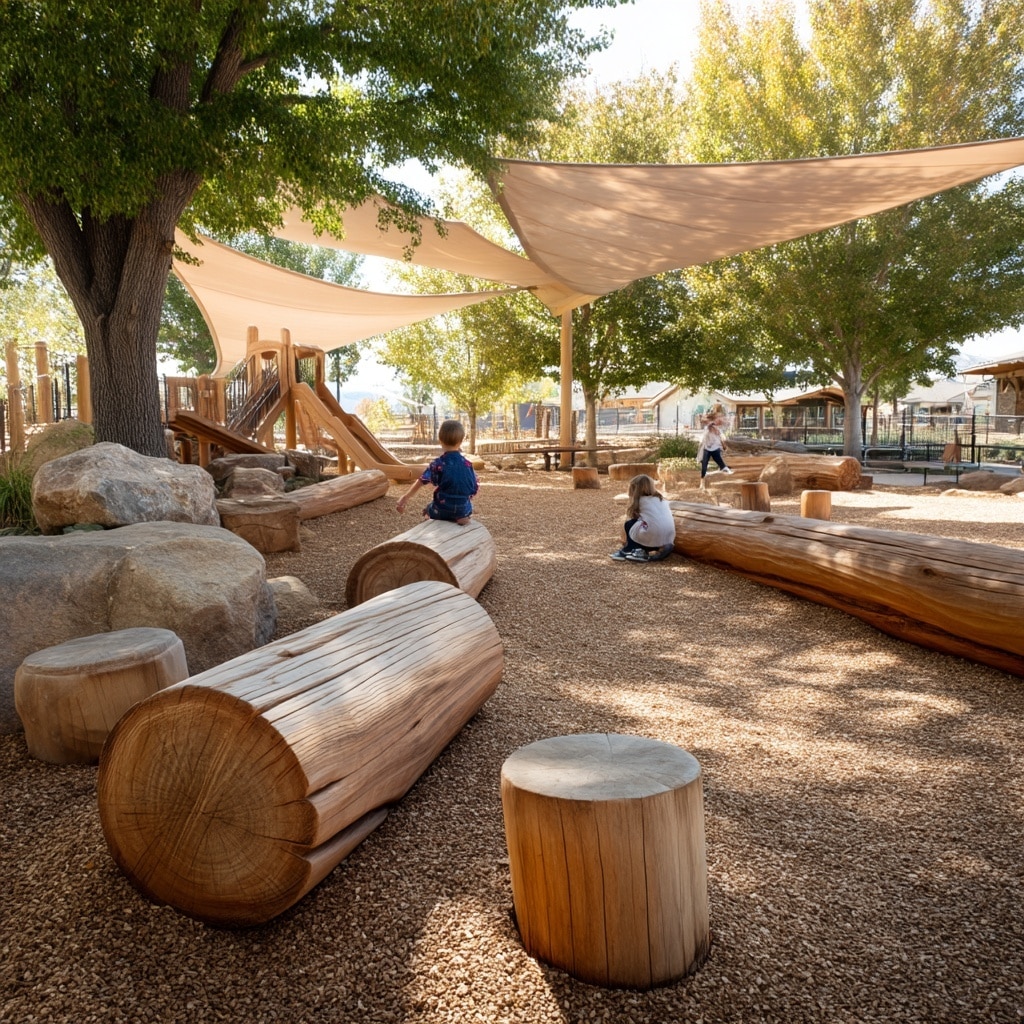
Building a natural outdoor playground requires creativity, but safety and thoughtful design must come first. These simple guidelines will help you create a space that’s both adventurous and secure for children of all ages.
1. Choose Non-Toxic, Natural Materials
Always use untreated wood, smooth stones, and child-safe plants. Avoid materials with sharp edges, splinters, or chemicals. Opt for natural finishes like linseed oil or beeswax to keep surfaces protected yet eco-friendly.
2. Plan for Age-Appropriate Zones
Divide your playground into different zones for various age groups. Younger children may enjoy sand play and small logs, while older ones might prefer climbing structures or rope bridges. Clear boundaries make it easier to supervise and ensure safe interaction.
3. Incorporate Soft Landing Areas
Use bark chips, sand, or rubber mulch under climbing zones and balancing beams. These soft materials cushion falls and add a rustic look that blends seamlessly with natural surroundings.
4. Keep It Flexible and Evolving
A great natural outdoor playground grows with the children who use it. Over time, you can add new plants, logs, or seasonal features like a mud kitchen or butterfly garden. This adaptability keeps the space fresh and exciting year after year.
5. Prioritize Shade and Comfort
Include shaded spots using pergolas, tree canopies, or climbing vines. Comfortable rest areas ensure children can recharge and continue playing safely even on warm days.
Examples of Natural Outdoor Playground Ideas

When planning a natural outdoor playground, inspiration can come from anywhere — your backyard, a local park, or even a simple woodland trail. Here are some creative ideas to help you design your own child-friendly natural haven.
1. Backyard Adventure Zone
Turn your backyard into a mini nature playground. Combine logs for balancing, a small sandpit, and a wooden teepee made from branches. Add stepping stones and low plants to make it feel like a forest adventure right outside your door.
Pro Tip: Let kids help set up and decorate their play area — it makes them feel proud and connected to their space.
2. Nature-Themed School Playground
Schools can create vibrant outdoor classrooms by incorporating natural play elements. Use tree stump seating, raised garden beds, and sensory paths made from wood chips and pebbles. It’s a perfect way to blend learning with outdoor exploration.
Pro Tip: Add a “bug hotel” or small compost area to teach children about ecosystems and sustainability.
3. Community Park Natural Play Area
Parks can replace plastic slides with boulders, climbing ropes, and willow tunnels. These encourage social play and adventure while blending beautifully into the landscape.
Pro Tip: Use locally sourced materials to reflect your region’s natural environment and reduce costs.
4. Forest-Inspired Mud Kitchen
A mud kitchen is one of the most loved natural play ideas! Equip it with old pots, pans, and wooden spoons so children can mix, pour, and create. This encourages imagination and sensory play — a true highlight of any natural outdoor playground.
Pro Tip: Install a rainwater collection barrel nearby for easy access to water.
Conclusion
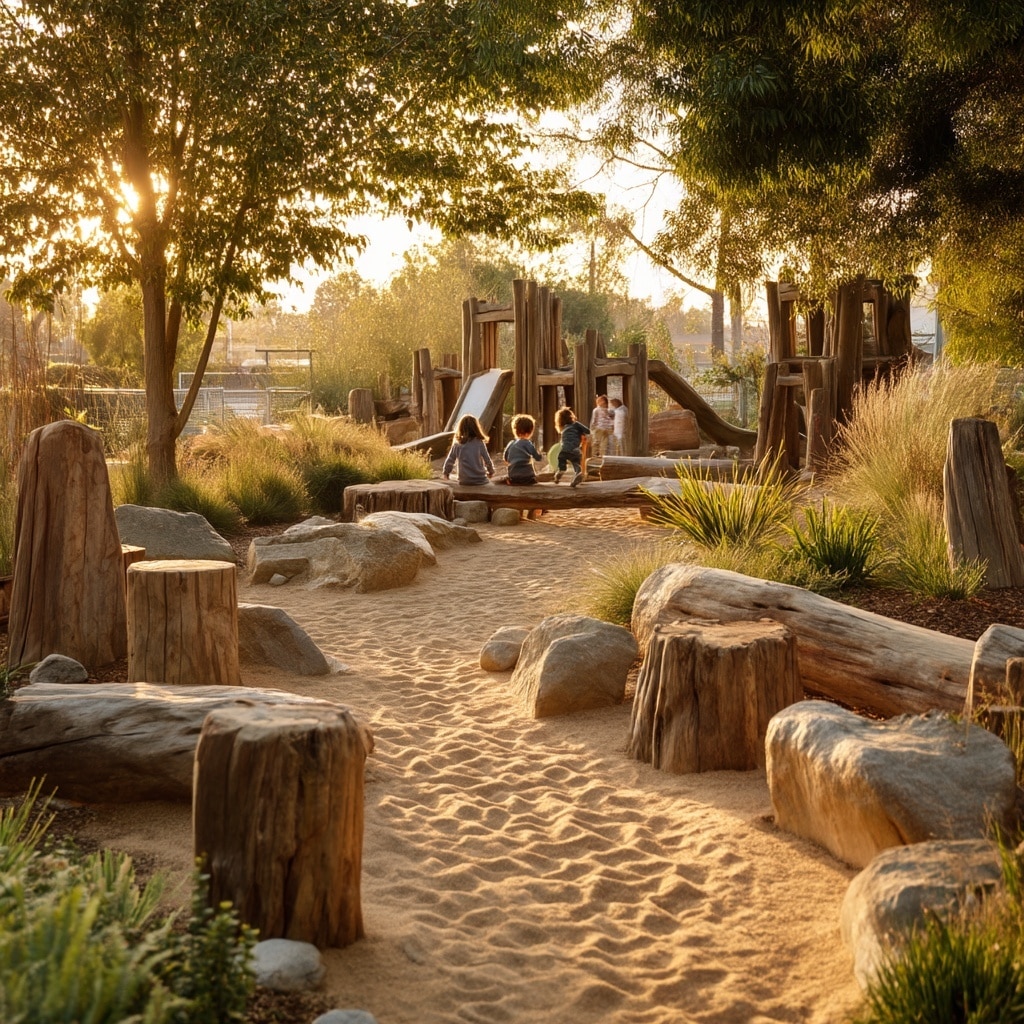
A natural outdoor playground isn’t just a place to play — it’s a living classroom where children grow, learn, and thrive. Surrounded by logs, sand, plants, and stones, kids experience the beauty of unstructured play while connecting deeply with the natural world. These playgrounds foster creativity, balance, and confidence, turning every stick and stone into a story waiting to be told.
Whether you’re designing a backyard play area, a schoolyard garden, or a community park, start small and let nature lead. With thoughtful planning, your outdoor space can become an inspiring sanctuary that encourages children to explore, imagine, and dream freely.

